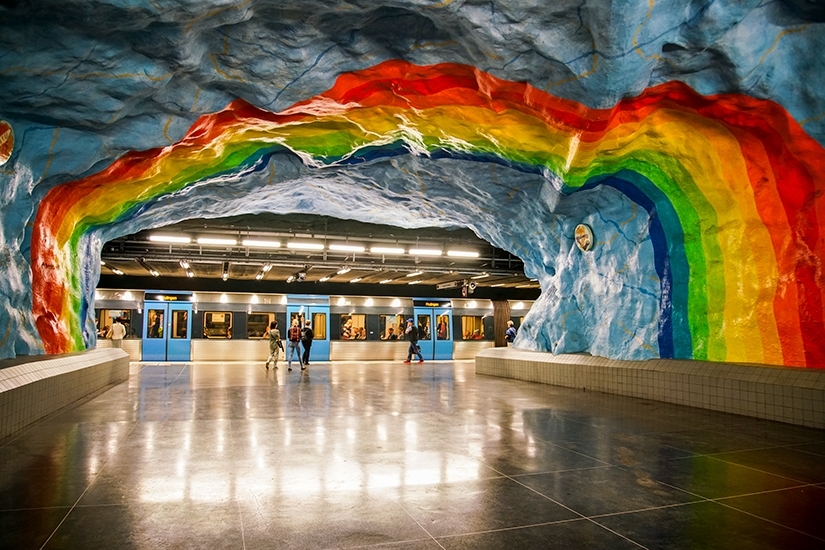
22 Mar Subway Art in Stockholm: The World’s Longest Art Exhibit
Stockholm is said to have the “world’s longest art exhibit”. You might think this art would be in a giant traditional museum, but it’s actually not! It’s located throughout 70 miles of Stockholm’s subway system—90 out of the 100 stations are adorned with art. So, when we had a few days to explore the city, I just knew we had to check out the subway art in Stockholm.
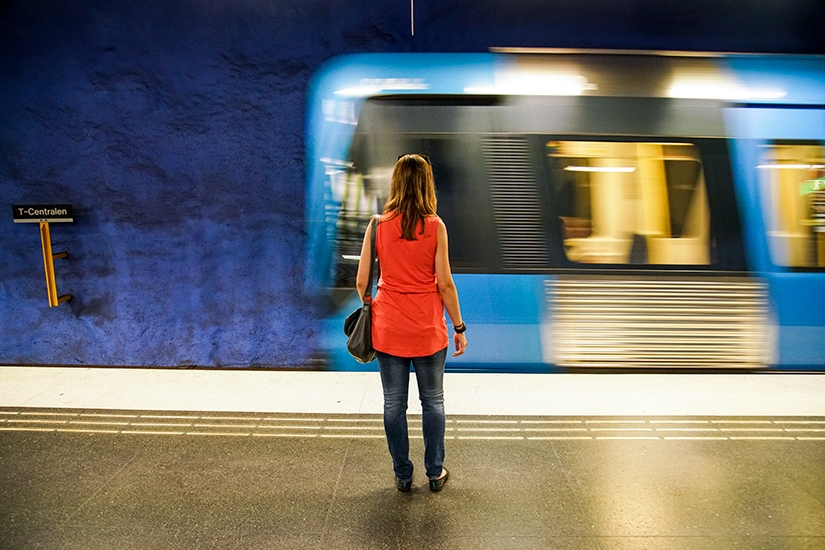
Art in the subways began all the way back in the 1950’s, and as time has passed over 150 artists have taken part in creating installations. We were amazed by the creativity and scenes the artists created. Infusing art into everyday life makes mundane tasks exciting and it can foster the growth of a creative, engaged community.
We decided to spend some time one afternoon hopping from station to station in order to see some of the more impressive stops. We made it to 7 stations over the course of an hour or so. Below is a peek into the stations and details about the route we took in case you are interested in following our path–for a map of the Stockholm system, click here. All you need is a valid subway ticket and you can be on your way!
Kungsträdgårdsgatan: Blue Line
We started at this station as we were already in the area and it worked into our plan quite well. The Kungsträdgårdsgatan Station was an interesting first stop as it showcases artifacts from the Makalös Palace which once stood above ground on this very site—the station is meant to resemble an archaeological dig. There are also red, green and white patterns painted throughout the station; these detailed patterns fill the walls, ceiling and floors throughout the station and create an impressive design.
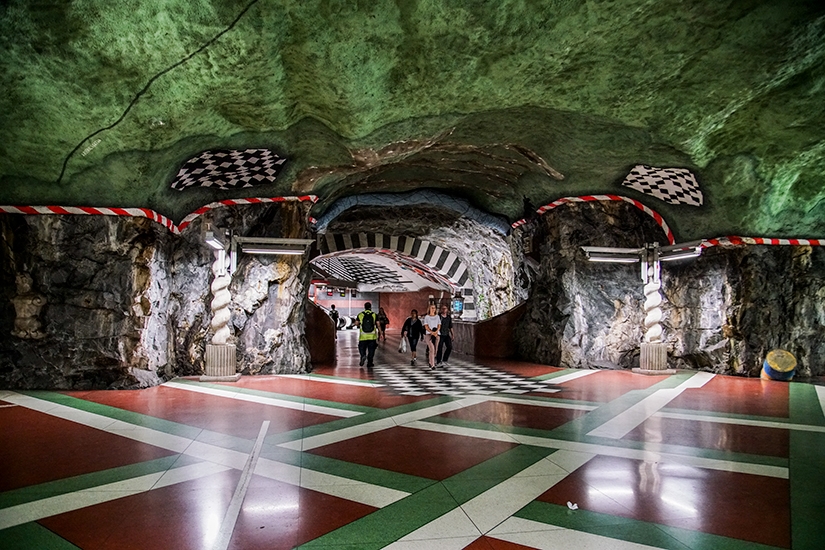
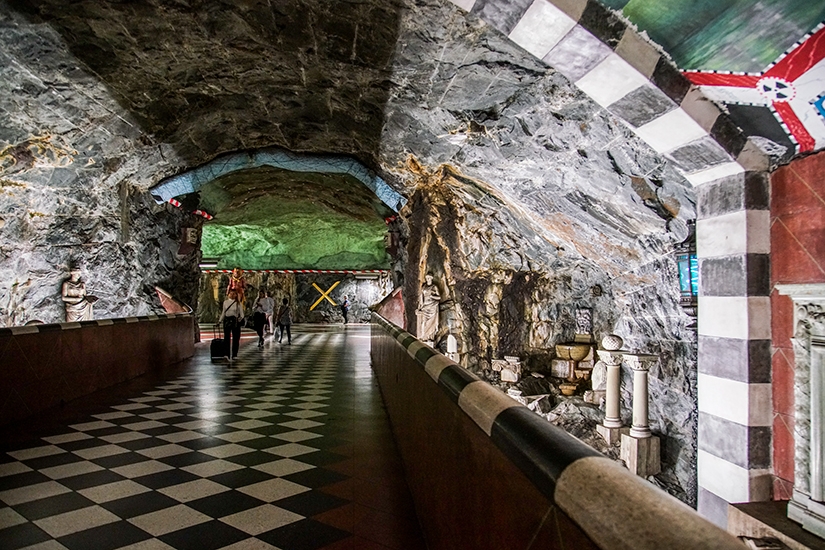
Next Stop: Kungsträdgårdsgatan station is at the end of the Blue Line, so hop on the train (towards Hjulsta) and ride one stop to next station, T-Centralen.
T-Centralen (Central Station): Blue Line
One of the main stations in Stockholm, T-Centralen is the station were all the trains connect, and because of its central location, it is one of the busiest stations in the city. The patterns and colors of the art were created to calm commuters and lower their stress levels. You will find soothing white and blue patterns of leaves on the lower level. The upper level pays its respects to those who worked on creating the station by painting blue silhouette patterns of carpenters, welders, miners and engineers over a white backdrop.
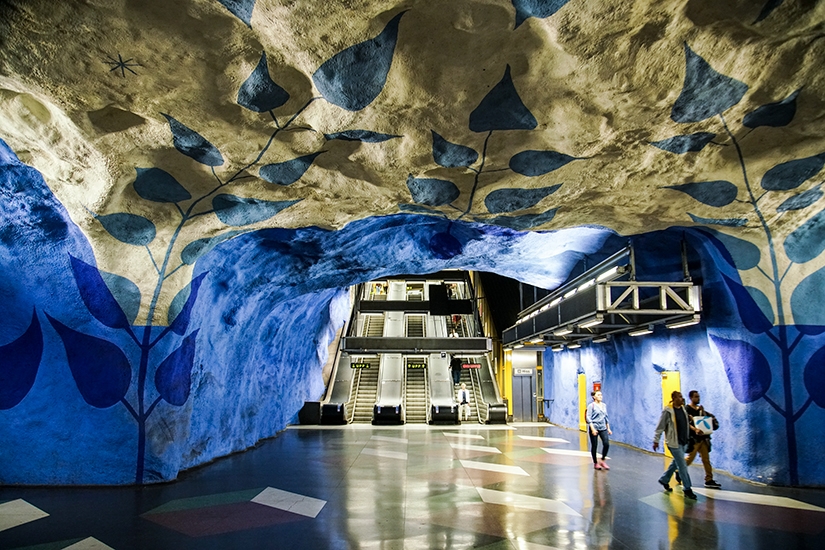
Next Stop: Continue on the Blue Line in the same direction (towards Hjulsta) and ride one stop to next station, Rådhuset.
Rådhuset: Blue Line
I loved the dramatic color and feel of the Rådhuset station—the organic architecture created an exposed rocky surface and made it feel like we were exploring a cave instead of a subway station. Rådhuset got its name because of the courthouse that is located directly above the station, and it also happens to be the fourth deepest station in Stockholm!
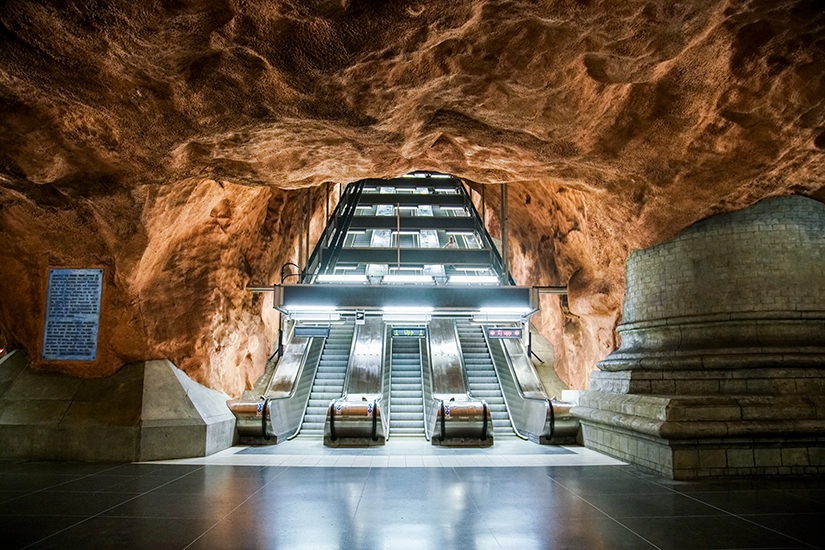
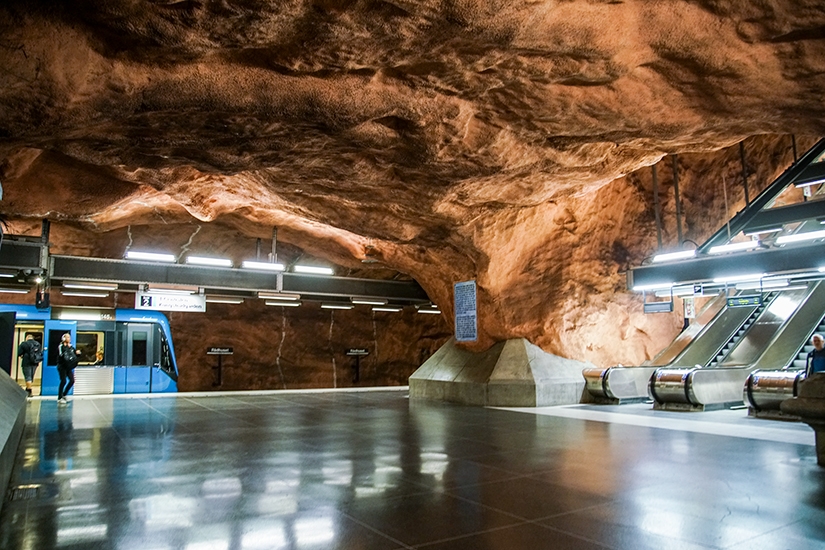
Next Stop: Continue on the Blue Line in the same direction (towards Hjulsta) and ride one stop to next station, Fridhemsplan.
Fridhemsplan: Green Line
Fridhemsplan was similar to Rådhuset with the exposed rock feel, but it was painted in grey and had a bit of a nautical theme. The station had displays of a ship, anchor and a compass and it was meant to showcase the city’s connection to the sea as well as its environmentalist movement.
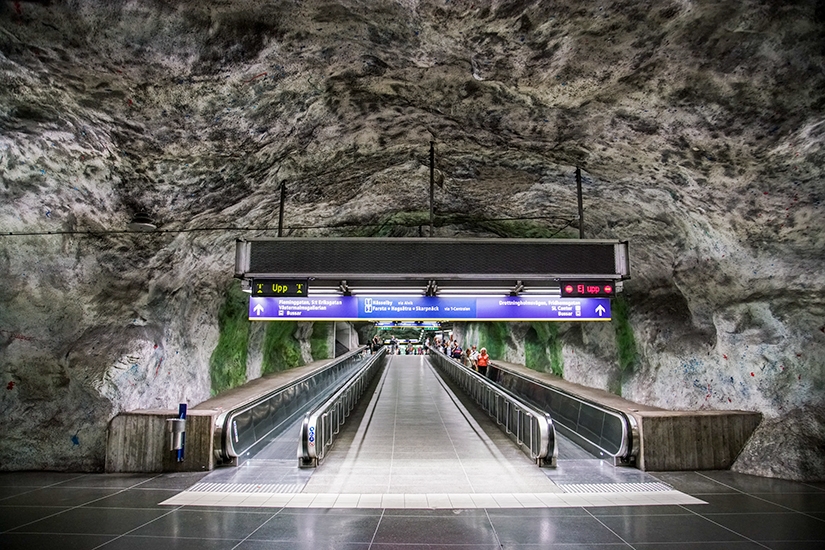
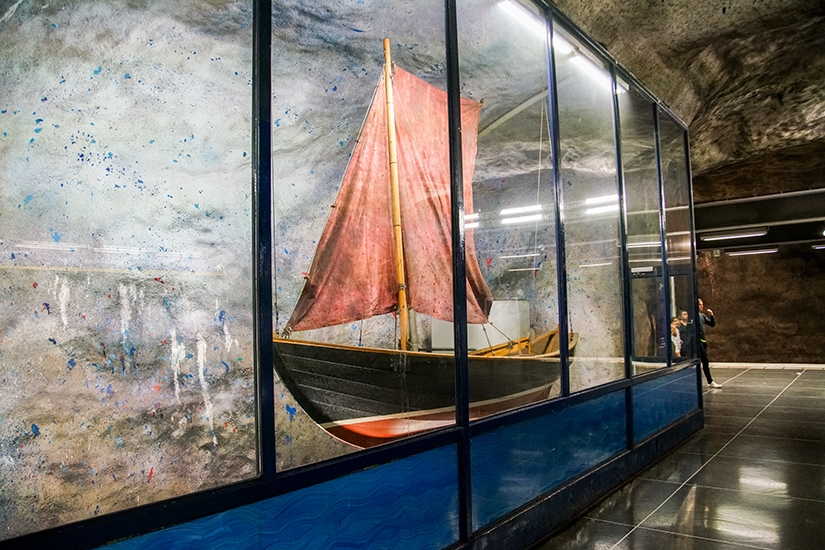
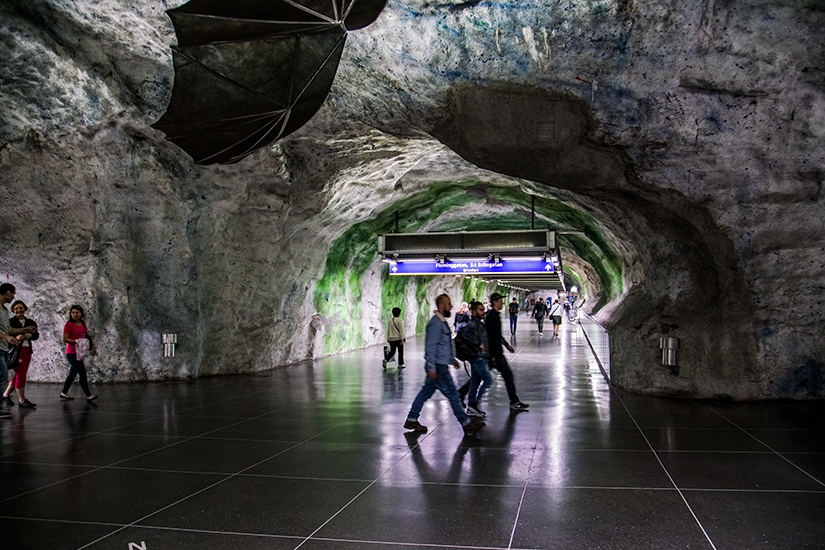
Next Stop: Switch over to the Green Line towards Hasselby Strand and ride one stop to the next station, Thorildsplan.
Thorildsplan: Green Line
This station was an outdoor station and because of that it was fairly basic compared to the others; however, it was still one of my favorites. The art at the Thorildsplan stations was created in 2008 by Lars Arrhenius. His designs included characters from the video games of Super Mario, Pacman and Space Invaders. I may be a bit obsess with Super Mario, so I loved checking these scenes out on the walls of this stop!
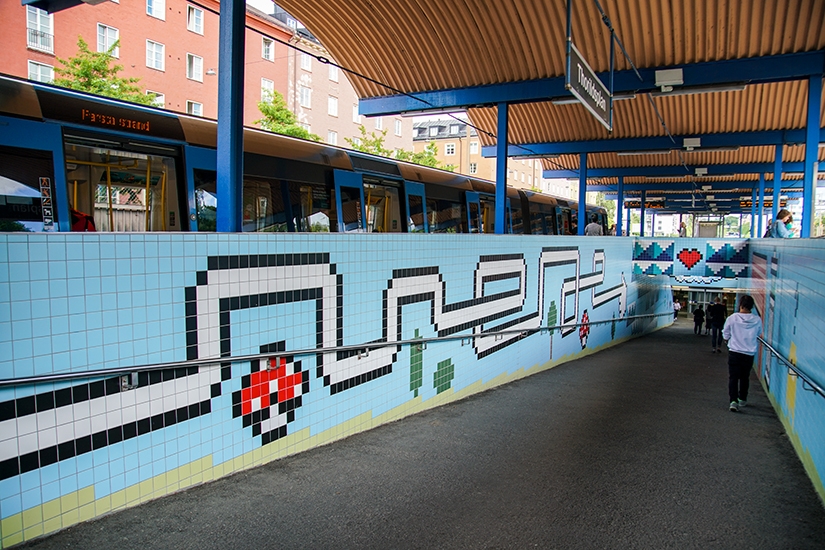
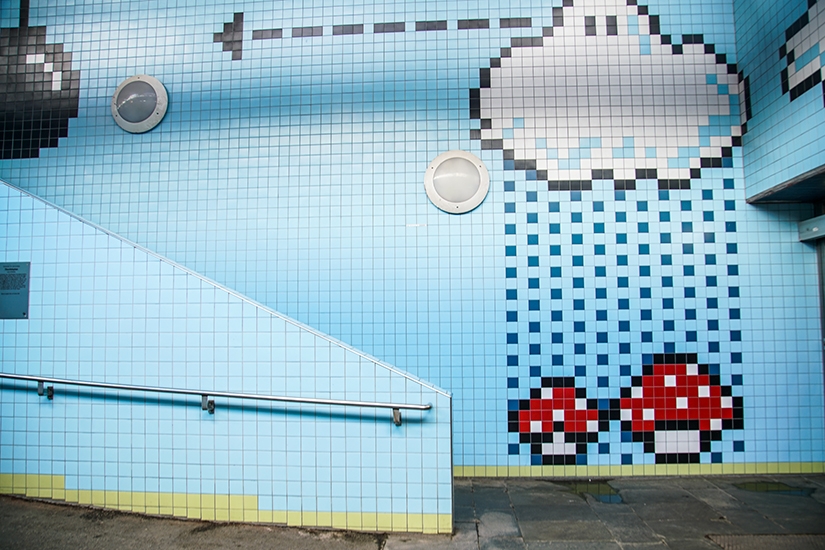
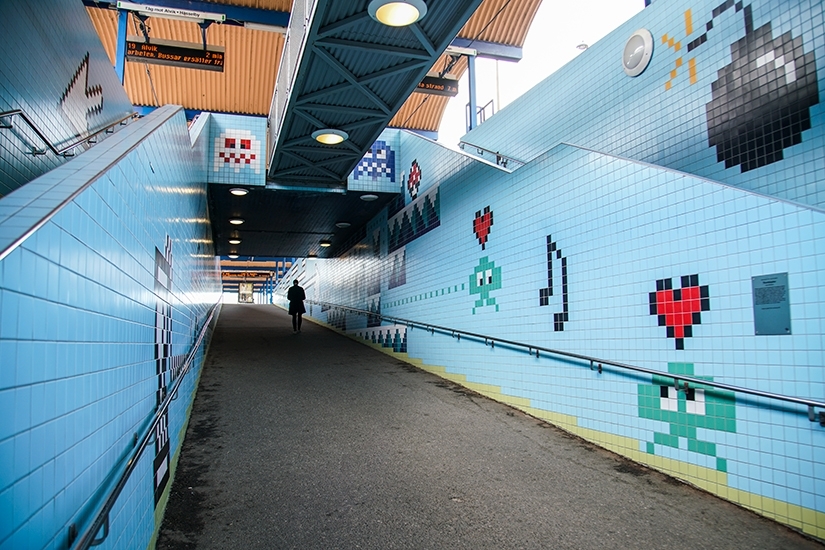
Next Stop: Go in the opposite direction towards Skärpnack, Farsta Strand, or Hagsätra and ride five stops to Hötorget. The Green Line splits in this direction but you will get off well before the split, so that is why there are three end stops listed—any of these trains will work.
Hötorget: Green Line
We weren’t originally planning on stopping at Hötorget, but as we were making our way to our last stop, we decided to get off the train just because. I’m glad we made a last minute decision to hop off the train—even though the station isn’t as elaborately designed as some of the others, I really enjoyed the simplicity of it. The station is filled with teal tiles and the ceiling is lined with more than 100 strips of neon lights. The lights wind their way along the center of the platform’s ceiling and it gives the station an almost electric feel.
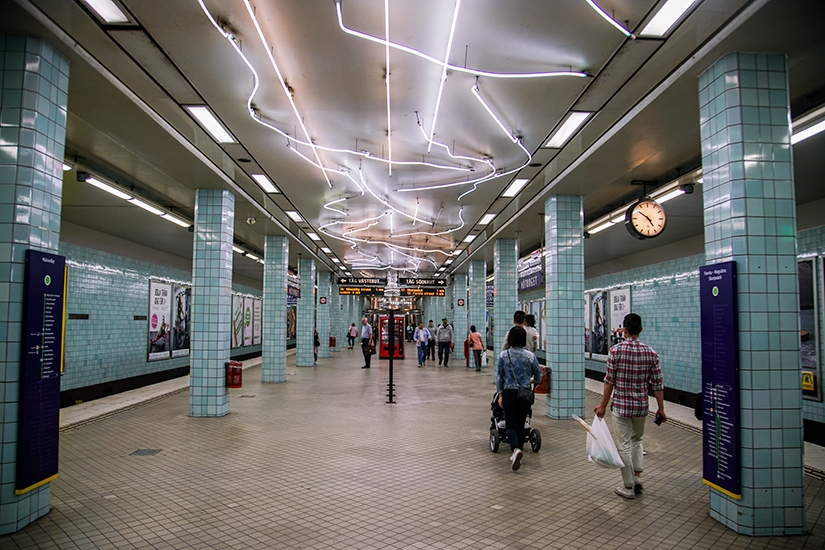
Next Stop: Hop back on the Green Line in the same direction (towards Skärpnack, Farsta Strand, or Hagsätra) and go one stop to T-Centralen. Then, switch over to the Red Line towards Mörby Centrum and ride two stops to the station Stadion.
Stadion: Red Line
This station required an extra line transfer to get to, but it was definitely worth the extra effort. Stadion is filled with bright designs and sculptures to commemorate the Stockholm Olympics that took place in 1912. The station was filled with all the colors of the rainbow and even had a painting of a giant rainbow that arched over the subway platform. I loved the cheery vibe that came from the designs and colors of this station, and it was a great stop to end our tour of the subway art in Stockholm.

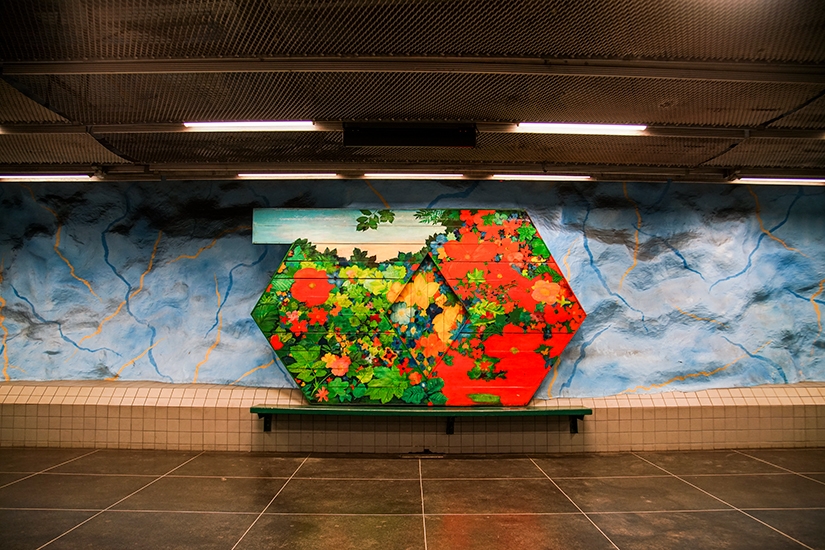
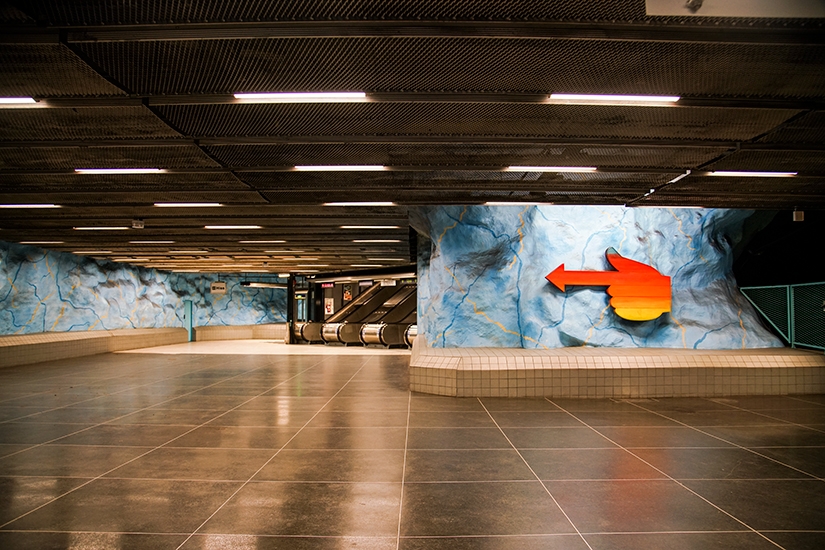
Because this was the last stop on our journey, we exited the subway here to check out the neighborhood above ground, but you could also head to another station for more exploring. Either way you are sure to find something interesting along the way!

